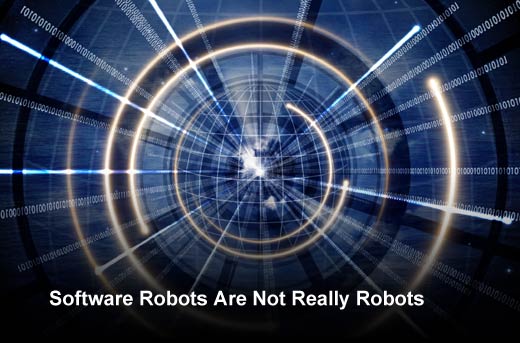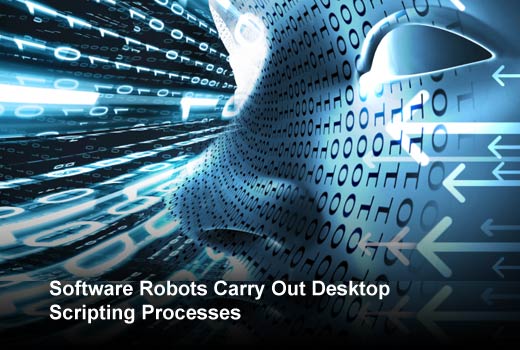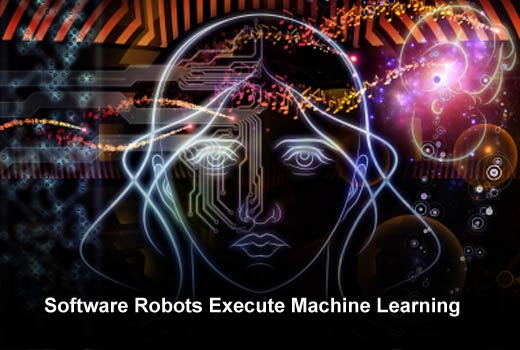With all the buzz around robots these days, most people envision R2D2 or Rosie from “The Jetsons” when they think about the machines. What many fail to realize, however, is that robots can come in both hardware and software forms, and the latter – while less discussed – are well positioned to completely disrupt the way we work.
For insight into these software ‘bots and how they will impact our lives, David Moss, founder and CTO, Blue Prism, and his team have compiled a list of some of the top myths and misconceptions associated with the technology. Read ahead to debunk some of the common misconceptions you might have about software robots and better understand how these next-generation machines will streamline operations in your business in the very near future.
Software Robots: Streamlining Business Ops
Click through for the facts behind common myths surrounding software robots, as identified by Blue Prism.
Software Robots Are Not Really Robots
Many question whether robots can come in software form, arguing that “robots” allude to some sort of physical autonomy. Others contend that robots must operate autonomously, making decisions in real, unpredictable environments to accomplish determined tasks. However, robots are technically any machines capable of performing acts with human-like skill.
Software robots mimic human actions via enterprise robotic process automation (RPA). Interacting with multiple applications in a non-invasive manner, they execute rules-based and repetitive transactional processes efficiently, accurately and at scale. For instance, RPA is perfect for transferring SIM card data from an old phone to a new one. The difference from traditional automation is their ‘non-invasive’ nature of intervention. Software robots don’t have direct access to backend databases, but they do access and input information through existing user interface layers, much like human workers.
Software Robots Are Not Worth the Cost of Deployment
Organizations are always looking for ways to achieve their goals at low costs. While outsourcing has long served as a solution for many businesses, companies today realize that this approach is no longer the most innovative, cost-effective way to complete core processes.
Enter software robots. Software robots – capable of working around the clock – are extremely cost efficient, delivering more value in less time. What’s more, they are not prone to human error – saving businesses the time and costs generally involved with error management.
While some may be deterred from the initial cost of software robot implementation, adopters have (quickly) found that return on investment is well worth it. The ROI is not only due to greater efficiency in work procedures, but also the elimination of secondary costs.
Software Robots Will Take People’s Jobs and Ruin the Economy
There is widespread fear that robots (the software kind included) will take over people’s jobs and completely disrupt the global economy. What history has proven time and time again, however, is that new jobs inevitably arise with new technology. Sure, software robots might take on rules-based back-office jobs. People, then, can focus on work that’s better suited for humans, including strategic and creative projects or any work requiring empathy.
In fact, early adopters of software robots have not only found that they have kept people on board, but have a happier, more satisfied workforce as employees are able to concentrate on more valuable and rewarding initiatives.
Software Robots Carry Out Desktop Scripting Processes
Software robots execute enterprise RPA, which is often confused with desktop scripting. However, desktop scripting is a much more basic technology that often fails to deliver substantial value for enterprises looking to innovate.
Software Robots Execute Machine Learning
Machine learning is a type of artificial intelligence (AI) that provides computers with the ability to learn without being programmed. It develops computer programs that can teach themselves to advance and change when exposed to new data.
Software robots, on the other hand, are more deterministic in nature. Designed to execute administrative processes, enterprises train the robots against a set of rules so that they carry out the prescribed procedures the same way every time.
These software robots are perfect for key processes like payroll. Delegating payroll processes to AI could mean that employees receive salary increases or decreases at a robot’s whim. With software robots, however, controlled by human “bosses,” processes are executed under the appropriate supervision and can be carefully monitored.








